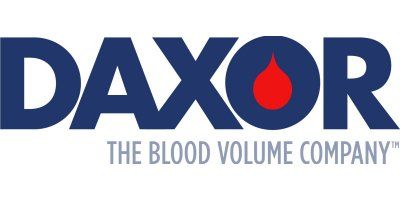

- Home
- Companies
- Daxor Corporation
- News
- Daxor Corporation Awarded Grant from ...
Daxor Corporation Awarded Grant from the Center for Advancing Point of Care Technologies (Capcat) to Develop a Point-Of-Care Blood Volume Analyzer
Daxor Corporation (NYSE MKT: DXR), the global leader in blood volume measurement technology, announces today that it has been awarded a grant from the Center for Advancing Point of Care Technologies (CAPCaT), a program run by the Massachusetts Medical Device Development Center (M2D2) funded by the National Heart, Lung, and Blood Institute and the National Center for Complementary and Integrative Health, both part of the National Institutes of Health (NIH), to develop a smart, point-of-care heart failure diagnostic for quantification of intravascular fluid overload to enable precision diuretic dosing.
“This exciting award accelerates our active research and development program for our next-generation devices to make precise blood volume measurement both easier and quicker to perform, whether in a hospital lab, at the bedside, or even in the patient’s own home,” said Michael Feldschuh, President and CEO of Daxor.
Heart failure treatment innovations are urgently needed to improve outcomes and reduce the cost of care. Over 6 million Americans suffer from heart failure, one of the most common and deadly diseases in the United States, leading to nearly 1 million deaths and 1 million hospitalizations annually. The point-of-care diagnostics market is projected to grow to $46.7 billion by 2024. Factors such as increasing incidence of target conditions, growing government support, and rising preference for home healthcare across the globe are driving the growth of the market.
“Daxor submitted an excellent proposal to our most recent call for applications and rose to the top of a very competitive field,” said David McManus, Co-Principal Investigator of CAPCaT and Professor and Chair of the Department of Medicine at UMass Medical School. “We look forward to working with them to advance their product toward the commercial market.”
This work is being funded by NIH grant 1U54HL143541.
